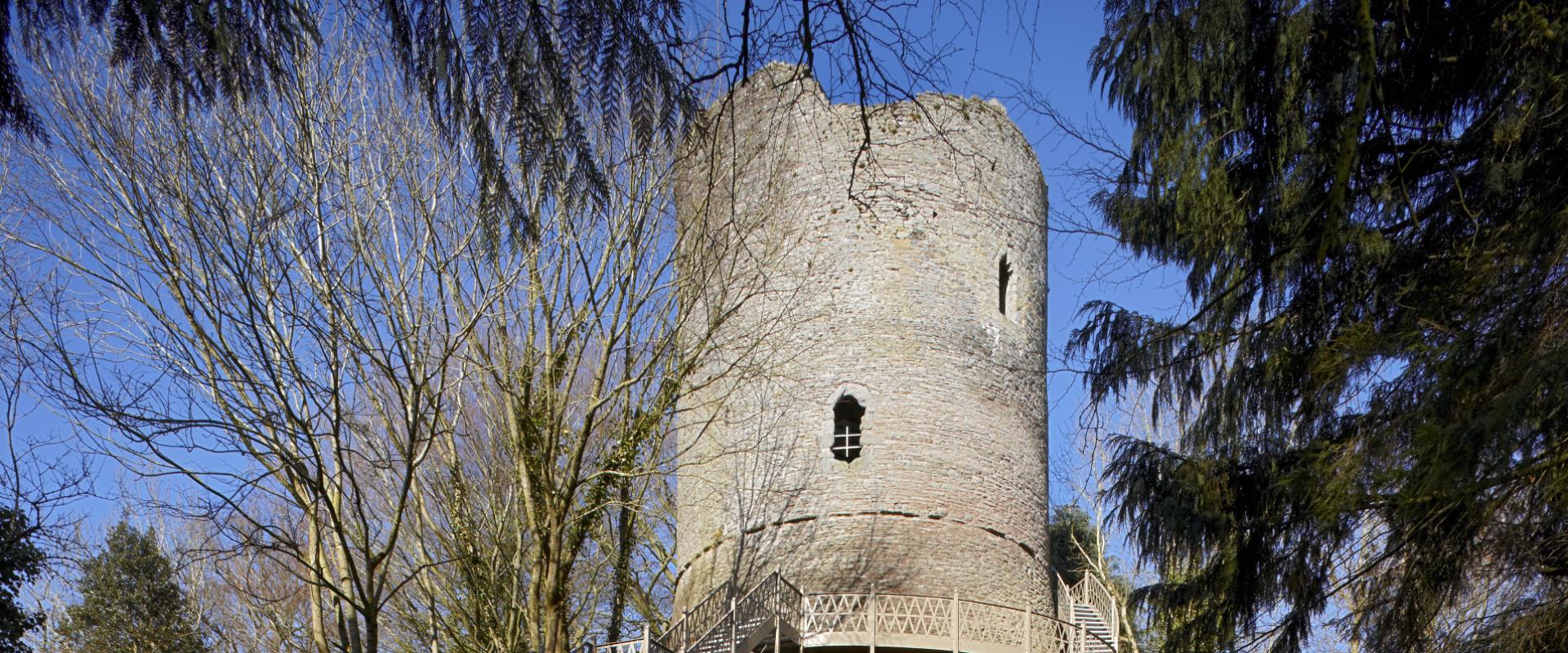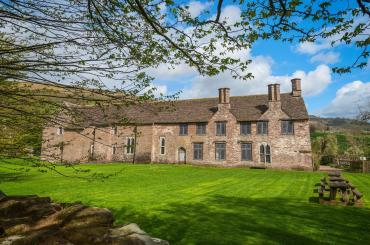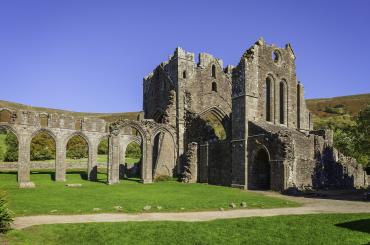Castell Bronllys

Sturdy stone tower with a turbulent history
First built as a basic ‘motte-and-bailey’ castle in the late 11th or early 12th century, Castell Bronllys' surviving stone tower dates from the 13th century. You can still climb the tower’s three floors, where far-reaching views from the highest levels give a good idea of the site’s strategic importance – its location in disputed Marches border territory saw the castle pass from English to Welsh hands several times over the centuries.
It was repaired in the early 15th century in response to the native uprising led by Owain Glyndŵr before falling into ruin. Alongside the tower, remnants of walls and the deep fosse (or dry moat) can still be seen.
Opening times & prices
Opening times
| 1st April - 31st March | 10am–4pm |
|---|---|
|
Last admission 30 minutes before closing Closed 24, 25, 26 December and 1 January Please note: during extreme weather conditions we may need to close monuments at short notice, please check our social media channels before visiting to ensure the site is open and safe to visit. Facebook @CadwWales | X (Twitter) @cadwwales |
|
Visitor information
Dogs welcome
Dogs on short leads welcome to access ground floor levels of the site.
Walking difficulty
Terrain: Level 3 — Moderate
Drone policy
No smoking
Health & Safety
Care and attention must be paid when visiting this monument. The grounds outside are exposed to the natural elements and maybe slippery or muddy underfoot. Appropriate footwear for the season must be considered prior to your visit.
Built historic environments are sometimes uneven underfoot with steps that are narrow, steep with varying step height. Care must be paid when accessing upper levels and mezzanine / balcony spaces.
There are often high thresholds and low door frames when passing into and through indoor spaces. We kindly ask that any handrail provided is used appropriately and there is no climbing upon or within the monument.
Guardrails have been installed to prevent access to any areas of the site that we have deemed as dangerous or to prevent falls in specific areas. Please do not climb over or through any fixed installation.
As with all ancient monuments there is always a risk of stones being dislodged in bad weather, however, we manage this through extensive monitoring.
Climbing may result in serious injury.
There are several wild plants and flowers, although these are great pollinators, they may be poisonous to visitors and animals, we strongly advise you not to touch or allow dogs to eat any vegetation.
Please watch our health & safety film before visiting Cadw sites.
Iechyd a Diogelwch / Health and Safety
Please report any anti-social behaviour such as climbing, setting fires, graffiti etc. to CadwAccidentsReports@gov.wales
The following signs can be found around the site at key areas of risk, please pay attention where appropriate.
Falls from height
Slippery or uneven surfaces
Falling masonry
Directions
Google Mapwhat3words: ///group.retained.harmless
Unlimited access to Wales' past
Join Cadw for as little as £2.00 a month and gain unlimited access to over 100 historical sites.
Enjoy the many benefits of Cadw membership
- 10% off Cadw gift shops
- 50% off entry to English Heritage and Historic Scotland sites
- FREE entry to English Heritage and Historic Scotland on renewal
- FREE entry to Manx National Heritage properties
- FREE membership pack including car sticker and full colour map


